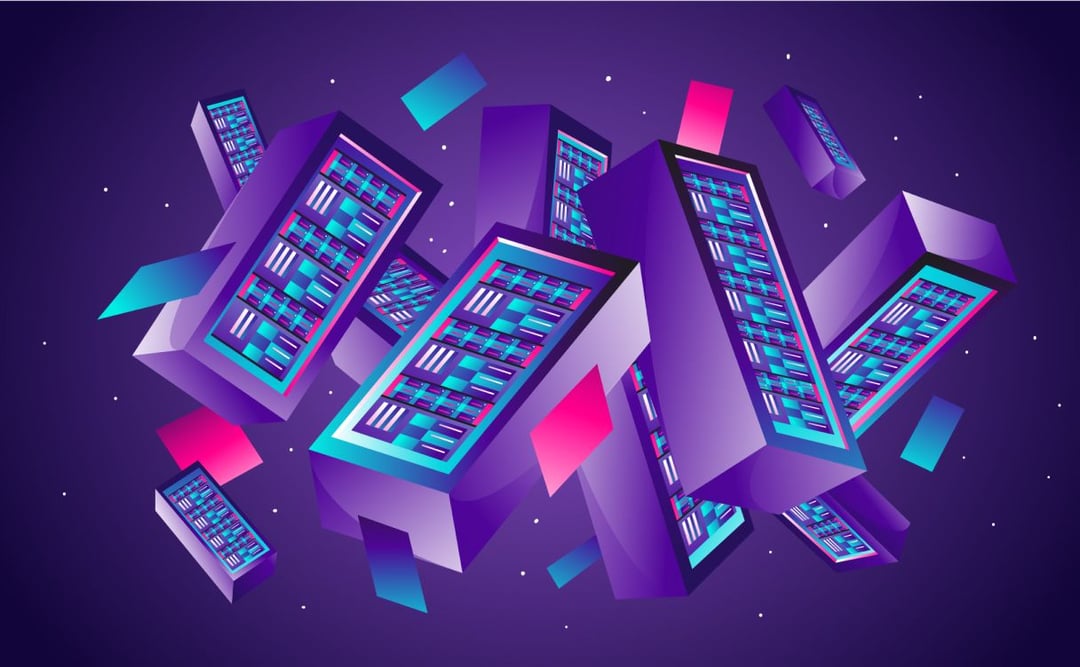
A Serverless future outside the cloud?
Serverless is only provided by major cloud providers... but could we imagine Serverless outside the range of cloud providers someday?

When thinking of human evolution, we often have in mind this image of the successive generations, leading us from the Australopithecus right up to today’s Homo sapiens standing upright, through different progressive steps, crafting and mastering increasingly advanced tools and weapons.
I have this same overall vision, but in a different context, when thinking about the evolution of server infrastructures used for building and hosting software. Let me guide you through each stage.

As a technology provider, it could be easy to forget that not all companies need or are willing to use cloud solutions. In fact, according to a recent study, conducted in the European Union (source: Eurostat), only two in five companies (41%) reported that they used cloud computing services. This number is growing fast (an increase of 5 percentage points compared to 2020). It varies according to the countries’ or companies’ sizes but it’s a fact. So, even if your company develops software, it might only use its own servers, either because of legacy support (requiring too much work/investment to migrate or evolve), or security concerns. However this strategy calls for long-term commitment as you will have to purchase, receive, and configure the hardware and, to make it pay offas you amortize it over several years, it needs to fit your needs for a long time, so it’s often oversized.

The first step in the journey to detach from hardware management has usually been to rent a dedicated server. Easy and reliable, it meets simple needs like hosting your website or running your emails, as well as more advanced applications. It only represents medium-term commitment as the server is rented monthly, and therefore allows you to evolve at your own pace. More importantly, you keep a sense of the concrete reality of your server. You know where it is located, you have its address, you know it’s physically there. It’s yours (as long as you rent it). It’s comfy, you control your own configuration in detail, and adjust it precisely to your needs. And we know for a fact that our customers love their Dedibox servers. It’s a great place to start before letting go of some of the hardware management, but it’s not really the cloud yet.

In the last 20 years, boosted by virtualization, infrastructure creation and hosting has changed a lot, from monolithic applications to microservices. Your server fleet is now elastic, evolving to meet your needs within minutes. No more long-term commitment, with hourly billing you can adjust your infrastructure quickly and adapt it to your business (not the other way around). If traffic on your e-commerce website increases during winter sales, instances can be added and removed dynamically, and you only pay for the resources you consume. The focus is on optimization, and 71% of cloud-based companies are already using IaaS to benefit from all this.

Why even bother managing servers? With containers, you only need managed Kubernetes to deploy and scale your applications. You can even run your containers on multiple cloud providers with Kosmos. Same thing for your databases - why bother setting them up, updating them, making them redundant, when you can have it all managed for you? Stay focused on your apps, we will run the databases for you. It frees up a lot of time that you can now spend on what really brings value to your company. But it’s a rather new mindset and so far only 21% of companies using the cloud are at this stage.

And now let’s completely erase the notion of server. Reach your ultimate form (before being replaced by an AI) and run your code directly on-demand with Serverless Functions. No need to provision or manage any infrastructure. Thanks to on-demand triggers, your code runs automatically and scales resources up and down from zero. No more hardware for you, all you need to do is focus on your code, we take care of the rest.
Don’t answer straight away (or get offended), as it is actually a trick question. Most of our customers don’t belong to a single category. In the 20+ years of evolution of cloud technologies, each company has run at its own pace, and moved progressively, focusing on its needs, capabilities, and expected gains.
Most companies subscribe to this simple and pragmatic rule: “if it’s not broken, don’t fix it”, unless there is a significant advantage to doing so (most often financially). But when starting new projects, it’s best to have a look at the best practices to make the right choices.
At Scaleway, as a European multi-cloud provider, our philosophy is to give you a wide selection of the best tools on the market to let you scale at your own pace, with minimal constraints and maximum reliability. And we will continue to make it easier for all developers, at any stage of their evolution, to build their infrastructure and to try and adopt new cloud technologies without friction.

Serverless is only provided by major cloud providers... but could we imagine Serverless outside the range of cloud providers someday?

Having an infrastructure that is not optimized is time and money consuming.I’m here to give you tips on how to plan your resource sizing.

This article provides a curated list of great open-source projects to help you build your startup and deal with tooling, design, infrastructure, project management, cybersecurity, and more.